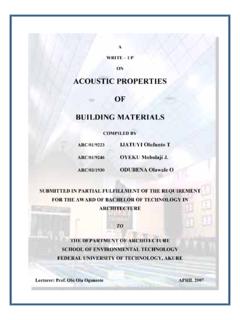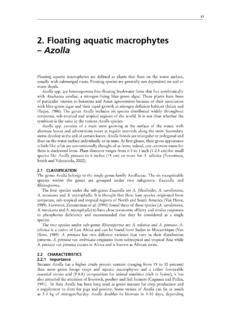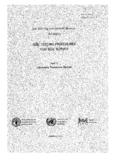Transcription of PROPAGATION OF SOUND - sdngnet.com
1 A WWRRIITTEE--UUPP On the PPRROOPPAAGGAATTIIOONN OOFF SSOOUUNNDD,, ITS TRAVEL PATH, TRAVEL MEDIUMS AND BEHAVIOR IN THE MEDIUMS. By AARRCC//0011//99220044 AAKKIINNAAYYOO,, OOlluuwwaaffiikkeemmii AARRCC//0011//99221122 AAYYAANNDDOOKKUUNN,, AAkkiinnsshheeyyee AARRCC//0011//99223333 OOKKAAHH--AAVVAAEE,, OObbuukkeennii Submitted to THE DEPARTMENT OF ARCHITECTURE School of Environmental Technology, Federal University of Technology, Akure, Ondo State.
2 IN PARTIAL FULFILLMENT OF THE REQUIREMENT FOR THE AWARD OF BARCHELOR OF TECHNOLOGY IN ARCHITECTURE Supervised by Prof. Olu Ola Ogunsote. PROPAGATION OF SOUND 0 APRIL 2007. CCHHAAPPTTEERR OONNEE SOUND AND ITS PROPERTIES IINNTTRROODDUUCCTTIIOONN What is SOUND ?
3 SOUND is a disturbance of the atmosphere that human beings can hear. Disturbances produced by practically everything that moves, especially if it moves quickly or in a rapid and repetitive manner. SOUND waves: A wave is an oscillating disturbance that travels through a medium. Many forms of energy, including SOUND , travel in the form of waves. SOUND waves are longitudinal waves originating from a source and conveyed through a medium (gaseous, liquid or solid). When particles in the medium vibrate parallel to the direction the SOUND wave is traveling, we have a longitudinal wave.
4 This is the type of SOUND wave produced by our transducers and used for medical diagnosis. In some materials, it is possible to transmit transverse waves, characterized by having the vibrations moving Figure 1; Longitudinal and transverse waves perpendicular (transverse) to the direction of wave travel. Transverse waves travel horizontally (from left to right) - the vibration direction is perpendicular (at right angles) to the direction in which the wave travels or propagates.
5 Waves in water and on strings are two good examples. PPRROOPPEERRTTIIEESS OOFF SSOOUUNNDD Speed of SOUND The speed of SOUND is a term used to describe the speed of SOUND waves passing through an elastic medium. The speed varies with the medium employed (for example, SOUND waves move faster through water than through air), as well as with the properties of the medium, especially temperature. The speed varies depending on atmospheric conditions; the most important factor is the temperature.
6 Air pressure has almost no effect on SOUND speed. Air pressure has no effect at all PROPAGATION OF SOUND 1 in an ideal gas approximation, because pressure and density both contribute to SOUND velocity equally, and in an ideal gas the two effects cancel out, leaving only the effect of temperature.
7 SOUND usually travels more slowly with greater altitude, due to reduced temperature. Humidity has a small, but measurable effect on SOUND speed. SOUND travels slightly ( ) faster in humid air. The approximate speed of SOUND in 0% humidity (dry) air, in meters per second (m s-1), at temperatures near 0 C, can be calculated from: In general, solids will have a higher speed of SOUND than liquids, and liquids will have a higher speed of SOUND than gases. In general, the speed of SOUND c is given by Where: C is a coefficient of stiffness is the density Thus, the speed of SOUND increases with the stiffness of the material, and decreases with the density.
8 Speed of SOUND in solids In a solid, there is a non-zero stiffness both for volumetric and shear deformations. Hence, in a solid it is possible to generate SOUND waves with different velocities dependent on the deformation mode. In a solid rod (with thickness much smaller than the wavelength), the speed of SOUND is given by: Where: E is Young's modulus (rho) is density Thus, in steel the speed of SOUND is approximately 5100 m s-1. Speed of SOUND in a Fluid In a fluid the only non-zero stiffness is to volumetric deformation, (a fluid does not sustain shear forces).
9 Hence, the speed of SOUND in a fluid is given by Where: K is the adiabatic bulk modulus PROPAGATION OF SOUND 2 The speed of SOUND in water is of interest to those using acoustics as a tool in the oceans or lakes, , for communication, mapping the ocean floor, or ocean acoustic tomography.
10 In fresh water, SOUND travels at about 1435 m/s. In salt water, SOUND travels at about 1500 m/s. The speed of SOUND in seawater depends on pressure (hence depth), temperature (a change of 1 C ~ 4 m/s), and salinity (a change of 1 ~ 1 m/s), and empirical equations have been derived to accurately calculate SOUND speed from these variables. Speed of SOUND in ideal gases and in air For a gas, K (the bulk modulus in equations above, equivalent to C, the coefficient of stiffness in solids) is approximately given by Thus Where: p is the pressure is the adiabatic index also known as the isentropic expansion factor.







